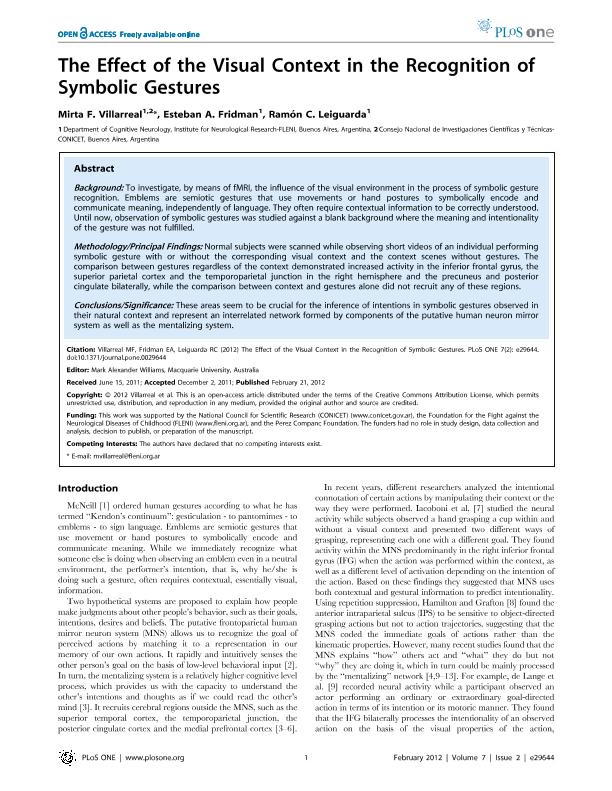Artículo
The effect of the visual context in the recognition of symbolic gestures
Fecha de publicación:
02/2012
Editorial:
Public Library of Science
Revista:
Plos One
ISSN:
1932-6203
Idioma:
Inglés
Tipo de recurso:
Artículo publicado
Clasificación temática:
Resumen
Background: To investigate, by means of fMRI, the influence of the visual environment in the process of symbolic gesture recognition. Emblems are semiotic gestures that use movements or hand postures to symbolically encode and communicate meaning, independently of language. They often require contextual information to be correctly understood. Until now, observation of symbolic gestures was studied against a blank background where the meaning and intentionality of the gesture was not fulfilled. Methodology/Principal Findings: Normal subjects were scanned while observing short videos of an individual performing symbolic gesture with or without the corresponding visual context and the context scenes without gestures. The comparison between gestures regardless of the context demonstrated increased activity in the inferior frontal gyrus, the superior parietal cortex and the temporoparietal junction in the right hemisphere and the precuneus and posterior cingulate bilaterally, while the comparison between context and gestures alone did not recruit any of these regions. Conclusions/Significance: These areas seem to be crucial for the inference of intentions in symbolic gestures observed in their natural context and represent an interrelated network formed by components of the putative human neuron mirror system as well as the mentalizing system.
Palabras clave:
GESTURES
,
VISUAL CONTEXT
,
FMRI
,
SYMBOLIC
Archivos asociados
Licencia
Identificadores
Colecciones
Articulos(SEDE CENTRAL)
Articulos de SEDE CENTRAL
Articulos de SEDE CENTRAL
Citación
Villarreal, Mirta Fabiana; Fridman, Esteban Andres; Leiguarda, Ramón C.; The effect of the visual context in the recognition of symbolic gestures; Public Library of Science; Plos One; 7; 2; 2-2012; 1-7
Compartir
Altmétricas




